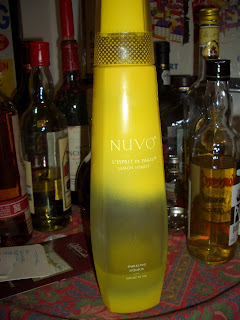 When Negroni cocktails show up on tap at bars, are ready-made cocktails then the next big trend in drinks? Sure you could make cocktails yourself, but for busy professionals coming home from a 10-hour work day, maybe all you want to do is crack a bottle of gin and tonic already perfectly mixed and chilled.
When Negroni cocktails show up on tap at bars, are ready-made cocktails then the next big trend in drinks? Sure you could make cocktails yourself, but for busy professionals coming home from a 10-hour work day, maybe all you want to do is crack a bottle of gin and tonic already perfectly mixed and chilled.Veneziano Sprizzzissimo (was Sprizzissimo with only 2 zs already taken?) is just such a ready-made drink. Spritz is the official cocktail of Venice and enjoyed in much of northern Italy. There are some different variations of this drink, but typically it's simply Prosecco mixed with a bitter liqueur like Aperol or sometimes Campari.
Sprizzzissimo is exactly that - an Italian cocktail of Prosecco mixed with a bitter liqueur, though there's no mention of Aperol or Campari on the bottle, so it's probably some Aperol-like spirit. This cocktail is an excellent summer aperitif served nicely chilled from the refrigerator. It's fairly dry, with notes of orange and spice in the finish, and lots of bubbles to lighten up any evening. A real plus is that it's quite low in alcohol - only 6.5%. That's a good thing because this bottle will only last a few nights before the bubbles fade. The distributor recommends serving it on ice, but I didn't find it necessary.
So you can fly to Venice to enjoy this cocktail, or pick up a bottle (found at Central Market in Shoreline) for $15 and enjoy a taste of Venice at home.





























